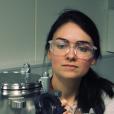STEAM Club for Girls
Offered to girls in Years 5, 6 and 7, the STEAM Club encourages creative exploration of Science, Technology, Engineering and Mathematics through the Arts (the A in STEAM).

Showing 1041 - 1060 of 1701 results
Offered to girls in Years 5, 6 and 7, the STEAM Club encourages creative exploration of Science, Technology, Engineering and Mathematics through the Arts (the A in STEAM).
CORIS360®: The world's most advanced radiation imaging system

Mia is in her second year of Mechatronics Engineering at the University of Wollongong. She has worked at ANSTO, in the first cohort of the engineering cadetship program, since July 2024.

Timetable and Teams links
Micro radiation therapy being developed by UOW in association with the Australian Synchrotron.
German ambassador visits to see a ‘sparrow’ being assembled.
New high energy ion microprobe beamline supports space research on the effects of radiation on astronauts.

A large team of international researchers have used synchrotron techniques to understand how key proteins contribute to the virulence of the rabies virus, sometimes called the “zombie virus.”


Danielle is currently the Acting Senior Principal Scientist, who oversees strategic developments, managing, prioritising and facilitating team interactions, capital and asset management programs and leading improvement initiatives across the ANSTO Melbo
A team of scientists led by Monash University and the University of Melbourne in association with the Peter Doherty Institute for Infection and Immunity have made progress in clarifying the molecular interactions that underpin how our adaptive immune cells recognise SARS CoV-2, which causes COVID-19.
PNG researcher provides a progress update on an aquaculture project to improve the industry and benefit the local population
Research has demonstrated that internally generated neutrons could be used to effectively target micro-infiltrates and cancer cells outside of the defined treatment regions.
Connect with the businesses and organisations driving advanced manufacturing and supporting green technologies.
Year 11 STEM student and aspiring physicist was given the opportunity of a lifetime to tour ANSTO’s Lucas Heights campus and meet some of Australia’s top researchers.